Employees and management alike tend to agree that organizational compliance training programs are very dry and boring. For most businesses, it is just an obligation they fulfill to keep themselves out of regulatory trouble. Only 53% of organizations believe that compliance training programs can drive business performance. And even fewer, at 33%, believe it advances employee development (Source: Brandon Hall Group, 2021). However, a poorly executed compliance training program can cost a company thousands in the event of a non-compliance incident. Therefore, organizations should re-evaluate and improve their compliance training programs regularly. For firms looking to spruce up their compliance efforts, here are 5 things to do before you create your next compliance training program.
Table of Contents
1. Say Goodbye to the Check-the-Box Approach
Before anything else, you need to let go of the check-the-box approach. Viewing compliance training programs as just an obligation is a mindset that perpetuates its dry and boring reputation. Intent matters, and when a training program isn’t developed to appeal to learners’ curiosity and internal motivation, it fails to leave an impression. The goal of all learning is to change people’s thoughts and behaviors in the desired direction, especially in compliance training. Thus, consider switching to a more proactive approach that actively involves and engages learners for your next compliance training module.
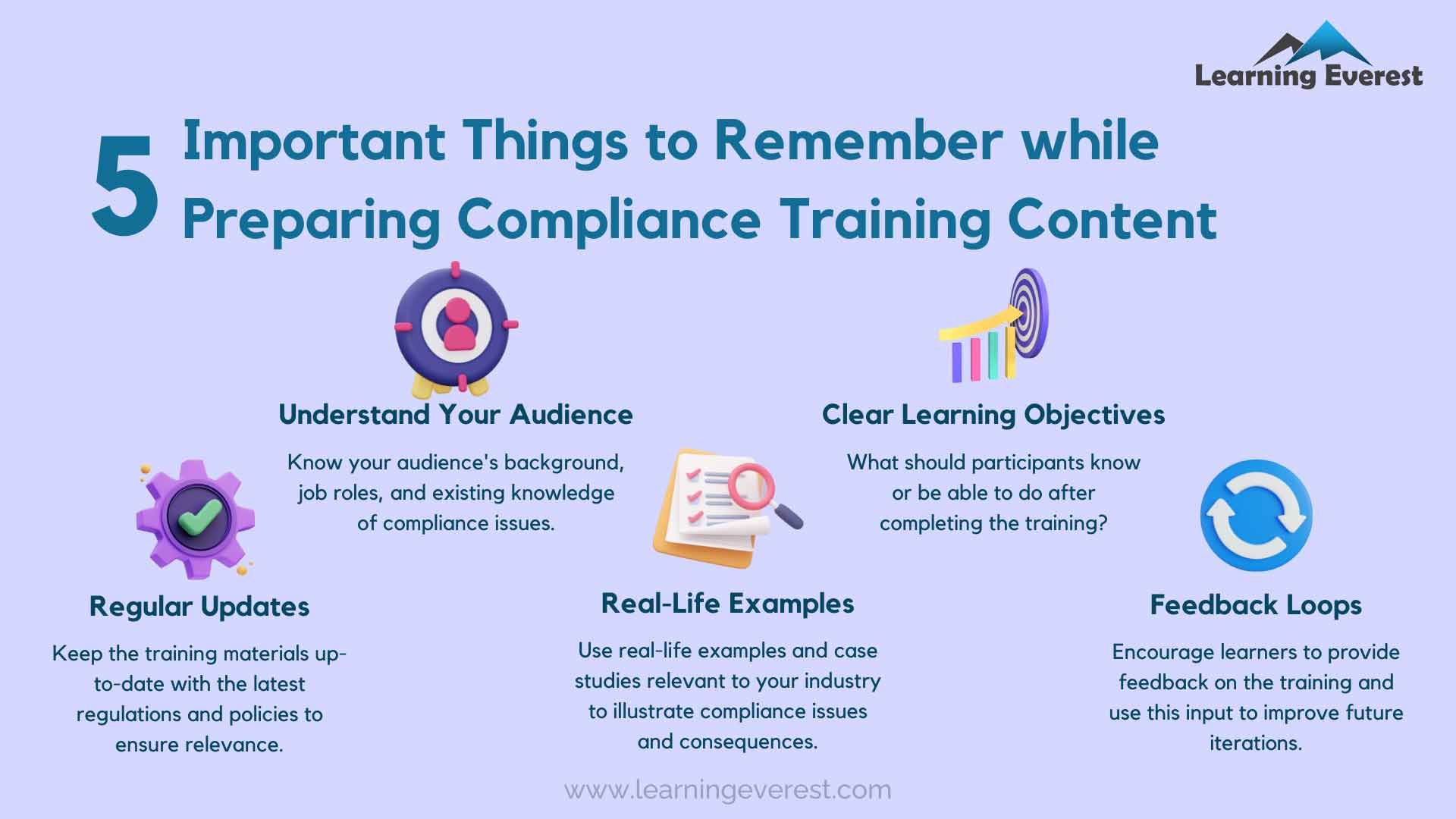
5 Important Things to Remember While Preparing Compliance Training Content
2. Expand Your Horizons with E-Learning Strategies
E-learning is an effective and cost-efficient medium for compulsory L&D activities like compliance training. E-learning not only quickens training resource development time but also training delivery time. Organizations can opt out of instructor-led and virtual instructor-led training for compliance areas that might not need it. Additionally, e-learning has many tools and strategies that can grab the learners’ attention and prevent compliance training programs from becoming too monotonous, such as:
- Graphics
- Videos
- Voice-over narrations
- Acted out examples and demos
- Gamified learning
- Interactive elements like tabs, drop-downs, drag-and-drop exercises, etc.,
E-learning can also make evaluations interesting for learners to ensure they retain what they have learned through quizzes, matching exercises, journal activities, and other objective and subjective-type assessments.

Expand Your Horizons with E-Learning Strategies
3. Offer Mobile learning
Mobile learning is a great way to let learners take courses when they can. Even eliminating a bit of the compulsion to complete mandatory compliance training programs can boost learner motivation. Learners who have the opportunity to engage with new information when they are in the right headspace tend to receive and retain it better. Training programs in the middle of work can feel like interruptions, especially if they are about something as notoriously boring as compliance training. Creating some flexibility, thus, elevates the learner’s experience when they take the course and increases the likelihood of fewer compliance-related accidents post-training.
Additionally, mobile learning is a great option for remote employees and industries with busy, fast-paced working hours with little to no break opportunities such as healthcare.
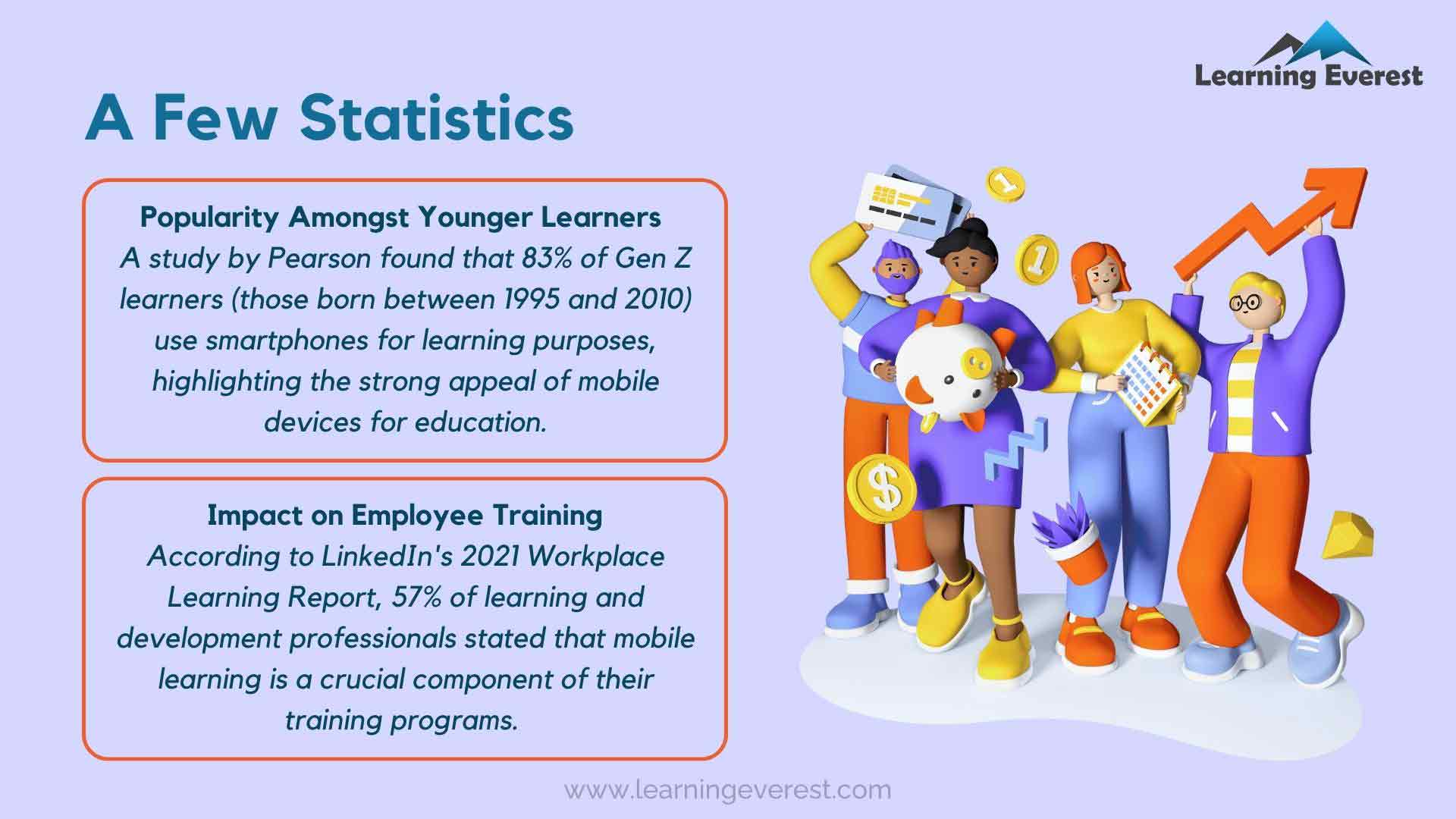
Ways to Make Your Compliance Training More Engaging- Offer Mobile learning
4. Gather Feedback About Your Previous Compliance Training Programs to Identify Areas of Improvement
Gathering learner feedback after each training activity is a best practice a business should implement in general, and compliance training programs are no exception. Gathering feedback is vital because:
- It allows businesses to refine their courses to better fit the learning needs of their employees
- It helps businesses gauge if the learning outcomes have been met through the training
Some questions to ask are:
- Did learners complete the course?
- Were learners able to clear assessment exercises?
- How long did it take learners to complete the training program on average?
- Were there any sections learners had a poor response to?
- Were there any sections learners had a favorable response to?
- Were there sufficient examples and demos in the program?
- How did learners rate the course overall?
You could also consider adding a suggestion box to your feedback surveys if you would like to collect more detailed reactions.
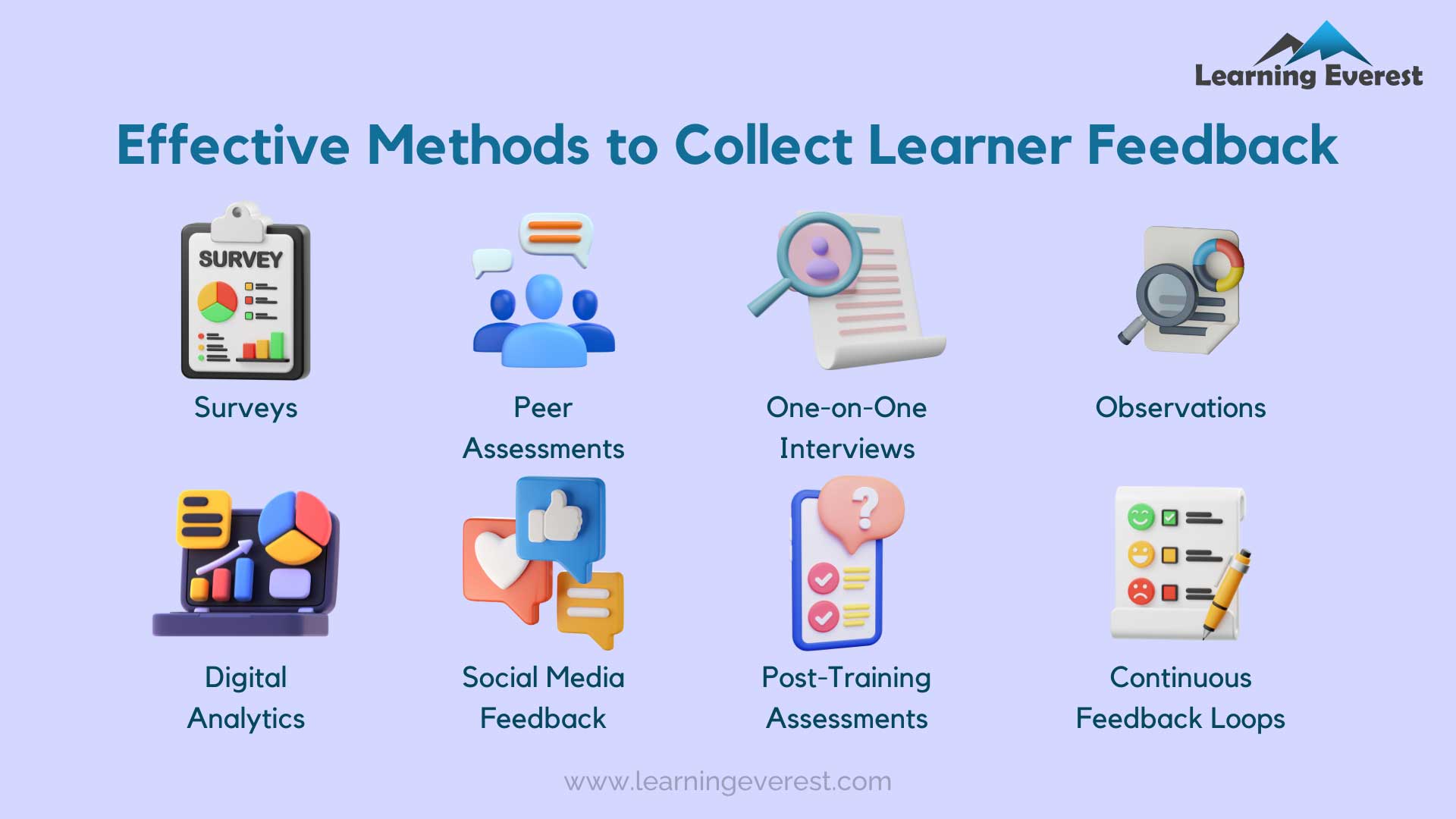
Effective Methods to Collect Learner Feedback
5. Add the Option to Generate Sharable Certificates to Your Compliance Training Program
Offering a tangible incentive to those who successfully complete compliance training programs is a great way to boost morale. Certificates can also act as valuable evidence during regulatory checks and increase employee accountability.
If you host your programs on an LMS, you can easily set up customized completion certificates for employees. If they can share these certificates with their coworkers, friends, and family, even better! The opportunity to share your achievements can be a big motivator for many and will add an extra layer of purpose to this otherwise dull office obligation.
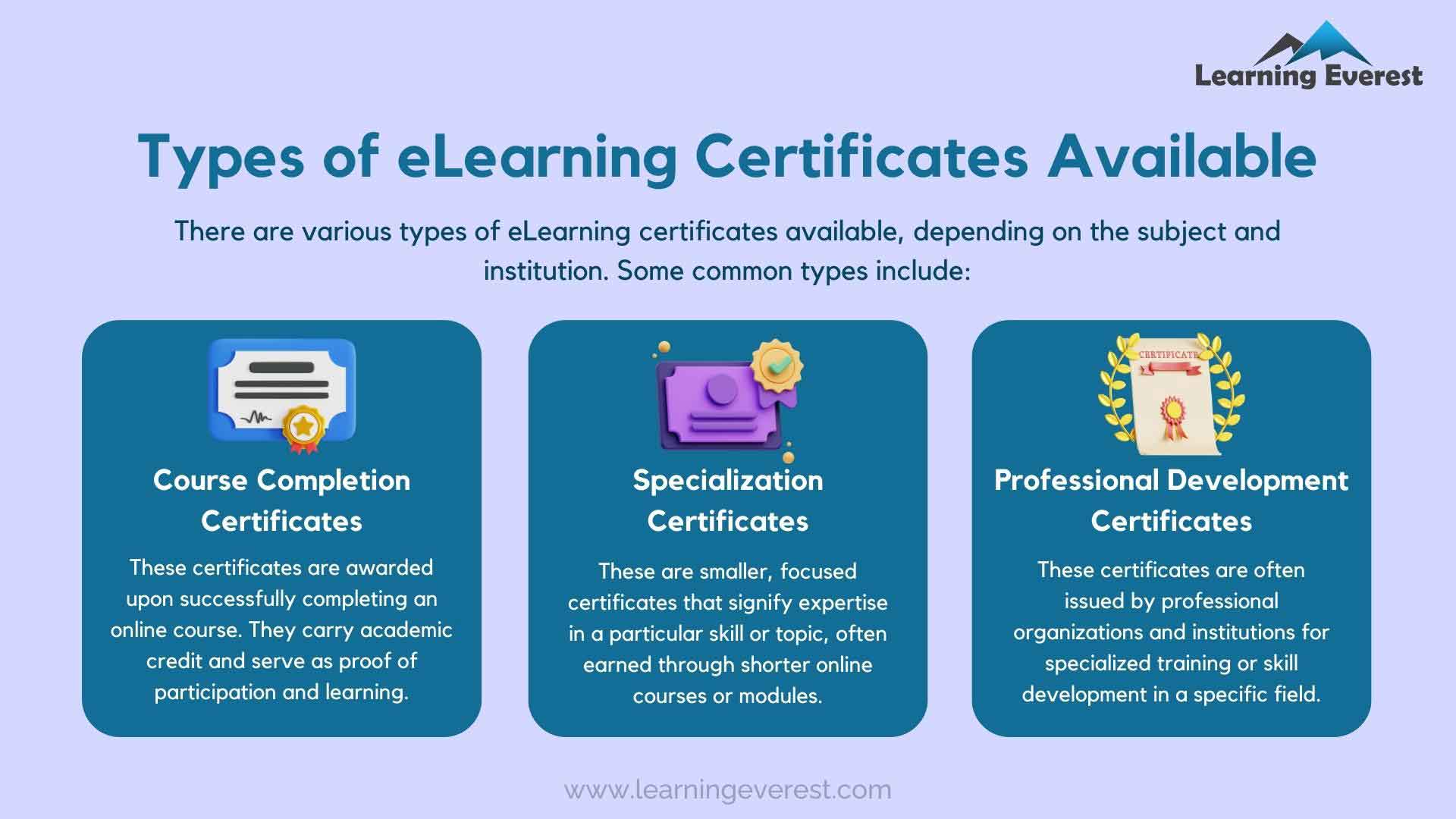
Certificates to Your Compliance Training Program
Here are some of the OSHA trainings considered as compliance trainings.
Infographics
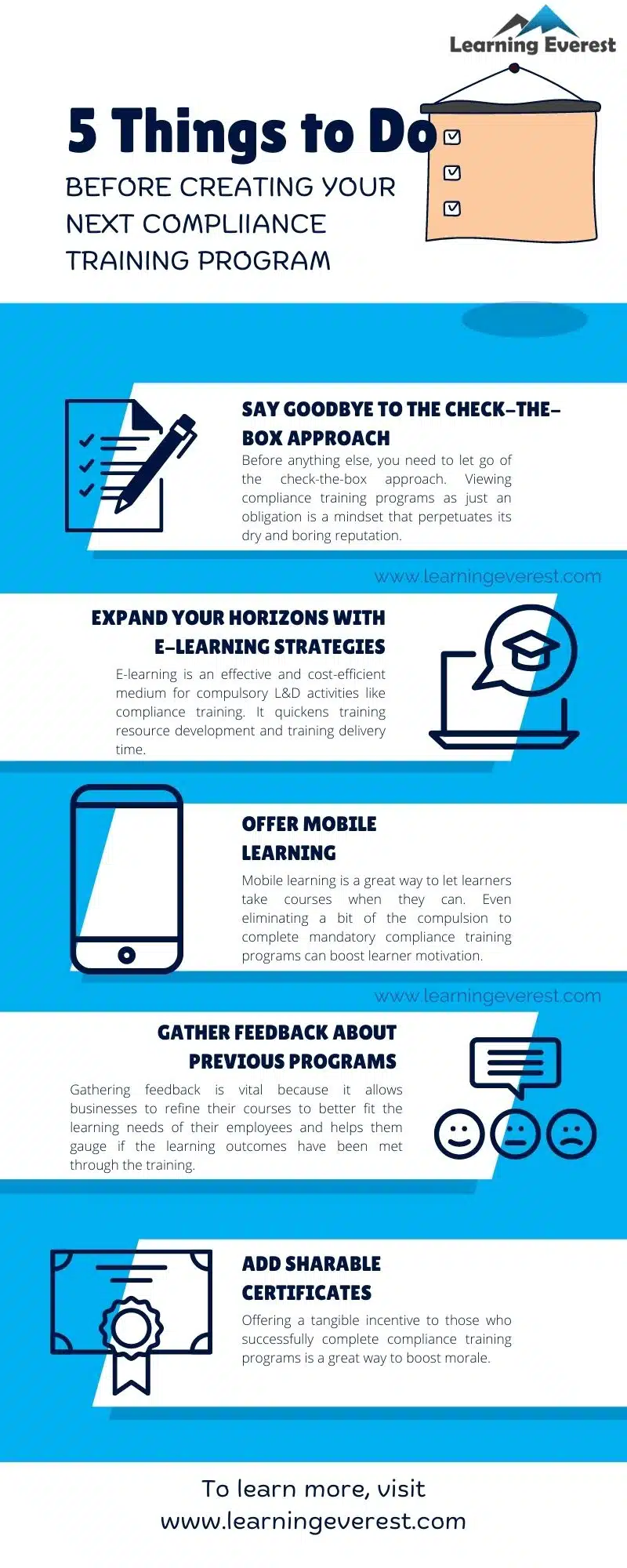
5 Things to Do Before Creating Your Next Compliance Training Program
Conclusion
Despite being infamous for their tedium, organizations cannot get out of conducting routine compliance training programs. By shifting from a check-the-box approach to one that banks on learners’ intrinsic motivation factors, businesses can elevate their compliance efforts to the next level. Engaged learners perform better. Firms can save themselves from fines, losses, and bad press if they prime themselves against non-compliance from every avenue.
Frequently Asked Questions (FAQs)
What is a compliance training program?
A compliance training program is a structured educational initiative designed to ensure that employees and organizations adhere to relevant laws, regulations, industry standards, and internal policies. It typically covers topics such as ethics, data security, anti-discrimination, and more.
Why is compliance training important?
Compliance training is crucial for organizations to mitigate legal and financial risks. It helps employees understand their responsibilities, reduces the likelihood of regulatory violations, and fosters a culture of ethical behavior within the company.
How often should compliance training be conducted?
The frequency of compliance training can vary depending on the industry and regulations. In general, it is recommended to provide initial training for new employees and regular refresher courses annually or as regulations change.





